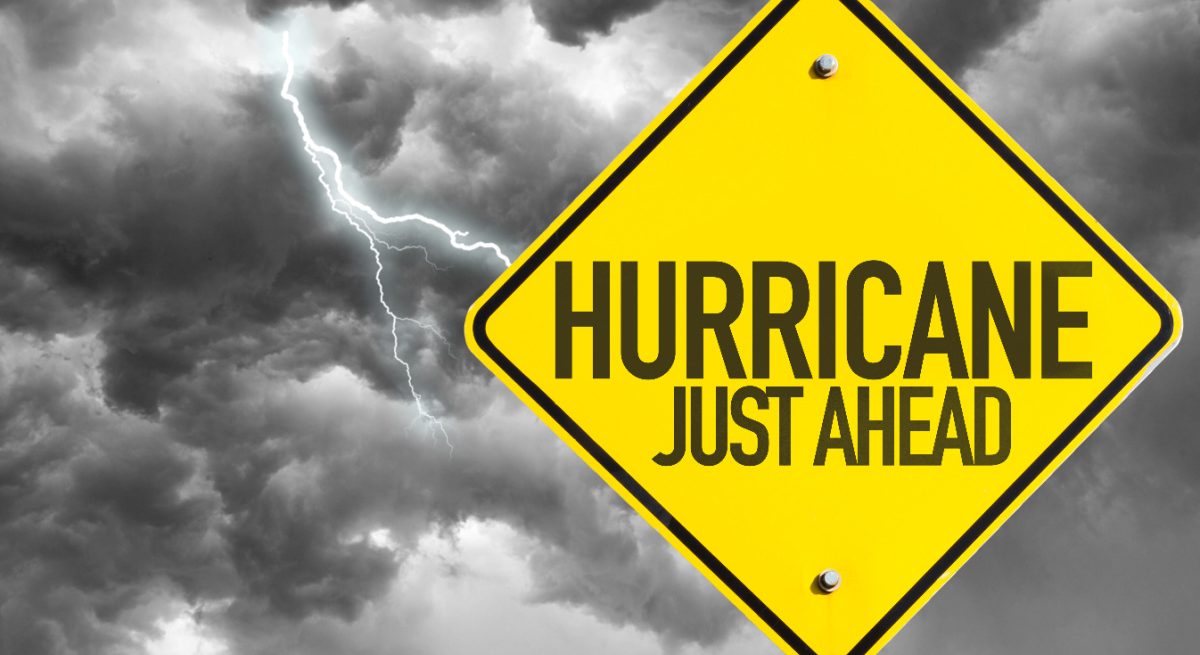Six Steps to Help Restaurants Prepare for Severe Storm Weather
6 Min Read By Paula Herald
Hurricane Ida is just the most recent major storm to make landfall in the United States this hurricane season. Thousands of businesses and more than one million people were left without power and forced to deal with the lingering effects of standing flood waters.
Restaurant owners can use these tips as they prepare for severe storm weather and deal with power outages, floods, pest problems and many other severe storm impacts.
Create a Crisis Communication Plan
A clearly outlined communications plan will keep employees functioning as a unit during a hurricane threat. Have a contingency plan in place for deciding when to close and ensure that all employees know their roles.
Emergency numbers and contact lists should be available for employees and should include:
- Managers
- Red Cross
- Public health authorities
- Bottled and Potable water supplier
- Regional and Corporate offices
- Water and sewer facilities
- Other necessary government or municipal agencies
- Equipment rental, including refrigerator truck or equipment
- Police and Fire departments
- Gas utilities and electric company
- Plumber
- Dry ice supplier
Emergency preparedness supplies are a good idea to have on hand at all times. Hurricanes may necessitate further emergency supplies. Consider having the following items on hand if a hurricane or flood is forecast.
- Flashlights
- First aid supplies
- Hand sanitizer or wipes
- Tarps, ropes, and plastic bags
- Battery-operated radio
- Non-perishable packaged or canned food
- Plywood for boarding windows
- Extra batteries
- Bottled water supplies
- Blankets and pillows
Stay Cool through Power Outages
One of the biggest dangers in a hurricane is the loss of power and how it affects food storage. Many Time and Temperature Control for Safety Foods (TCS Foods) may need to be destroyed if they go out of temperature range. Temperature abused foods can grow harmful bacteria and spoil, putting people at risk for foodborne illness. Use these additional tips when dealing with power outages:
- As soon as possible after losing power, create ice baths for TCS Foods such as eggs, meats, seafood, milk, cheese, prepared foods, cooked vegetables.
- Monitor and document product temperatures as long as it is safe to remain in the building or if the power outage is confirmed to be brief.
- Avoid opening reach-in and walk-in cooler doors as much as possible to keep foods cold. A freezer in good condition may maintain its temperature for up to 24 hours if unopened.
- Discard any TCS Foods that have been above 41° F for more than two hours or if the time out of temperature control is unknown. Use a calibrated thermometer to test the temperature of foods.
- Any food that smells off, looks off-color or has changed texture should be immediately discarded.
- If power is expected to be out for an extended time, dry ice can help keep refrigeration temperatures at 41° F or below. Be cautious when using dry ice, as it can produce dangerous carbon dioxide gas in closed areas.
Keep Foods Safe During Floods
Flood water can significantly damage facilities, but it is also a food safety hazard. All flood water has the potential to be contaminated with sewage and agricultural waste. If the facility has had flooding, even minor, take the following precautions:
- Ensure it is safe and wear protective gear such as boots and coveralls.
- Throw out all food and kitchen items that have come into contact with flood waters.
- Fabric furnishings and carpets must be discarded. Some equipment may need to be discarded if it cannot be disinfected or if it is not functional.
- If they can be salvaged, affected walls, floors and surfaces must be washed, rinsed and disinfected.
- Metal, glass or ceramic pans, dishes or utensils that contact flood waters must be washed, rinsed and disinfected before use. (See next bullet)
- Food contact surfaces must be rinsed with potable water following the use of this disinfecting solution.
- Canned goods that have come into contact with flood water and are not damaged, dented or rusted may be salvaged. Inspect carefully. Cans that may have fallen from shelving may become dented/damaged.
Ensure a Clean Water Supply
A clean water supply and sufficient plumbing are necessary for any food establishments to conduct business. While local health authorities will have the most up-to-date information, the following steps may be necessary if water service is interrupted or becomes contaminated.
- If water is contaminated or a boil water advisory is in effect, use bottled water for drinking and cooking. Boiled water or a source of potable water must be used for all hand washing.
- A dish machine or dishwasher should only be used if 180° F or hotter rinse water is available. In the absence of a usable dish machine, use a three-compartment sink and boiled or bottled water to prepare the wash, rinse and sanitize compartments. The potable water source may need to be heated to proper temperatures before being used.
- If water has been contaminated, do not use any ice from ice machines or soda fountains. Once water service is restored and before using the machine, discard the first cycle of ice, then clean and sanitize ice bins after flushing the ice machine system. Flush all water lines for a minimum of five minutes.
Be Prepared to Handle Mosquitos
Another major issue when dealing with the aftermath of a severe storm are the pest infestations that often arise. Rentokil, the parent company of Steritech, shared these key tips for dealing with mosquitoes and other pests.
Mosquitos thrive in warm, damp environments making them highly active in the weeks following a severe storm or hurricane. Not only are mosquitoes annoying, but they also can spread harmful diseases such as West Nile virus and Zika virus. To protect oneself from mosquitos during storm clean up efforts remember these steps:
Defend – Always wear insect repellent during clean-up efforts. Use an EPA approved insect repellent according to label directions. To be most effective, repellents should contain at least DEET, picaridin or oil of lemon eucalyptus. If possible, avoid peak mosquito hours as they are most active in the hours from dusk to dawn, and take extra precautions if outside at this time.
Dress – Wear long sleeves, long pants and socks when near water or heavily wooded areas especially during peak mosquito activity hours from dusk to dawn. Spray insect repellent on bare skin as well as on clothing to ensure proper protection.
Drain – Drain any standing water and clean out gutters and drains to ensure they are free- flowing. Repair any roof damage that could lead to interior water damage or leaks. Remove items that collect water such as old equipment, decorative items such as fountains and birdbaths, tarps, flower pots or trash. Mosquitoes can breed in as little as a tablespoon of water so draining all forms of standing water is imperative to mosquito control.
Assess the Property for Additional Pests
Many pests including snakes, fire ant colonies and rodents can be present in flood waters. Fire ants can actually float across flood waters by linking their bodies together in a raft formation to relocate and find new land. If fire ants or other pests are spotted in flood waters, do not enter the water or attempt to treat it with pesticides as this can further contaminate the flood waters.
Fallen trees, displaced shrubs and other debris piles in close proximity to buildings also offer the perfect harborage for pests fleeing from weather. The closer these items are to the building the more likely pests are to use them as a roadway to access the interior building. After a storm, remove scattered debris as far away from the building as possible. A minimum distance of 25ft is recommended to keep pests from entering the building.
Rodents, wildlife and insects can also enter a facility through vents, pipes, HVAC and other utility openings. Ensure all vent covers are in place and that there is no danger or cracks around utility lines that would allow pests in. Removing debris and repairing any structural damage as soon as possible can help prevent pest infestations during storm recovery. Holes, gaps and weakened structures can provide additional opportunities for pests to enter a building. Rodents can fit through holes as small as ¼ a inch so it’s extremely important to conduct a thorough inspection of the building.
Being proactive and creating a crisis communication plan prior to experiencing any type of natural disaster is an essential part of protecting employees, customers, and the overall structure of the business. Restaurant owners can use these key tips for building a plan and staying safe during power outages, floods, water supply issues and pest problems. Most importantly, put staff and customer safety first. Err on the side of caution and do not attempt to salvage any food that could potentially become contaminated.


